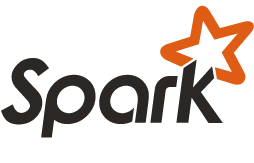MLlib - Old Migration Guides
The migration guide for the current Spark version is kept on the MLlib Programming Guide main page.
From 1.2 to 1.3
In the spark.mllib package, there were several breaking changes. The first change (in ALS) is the only one in a component not marked as Alpha or Experimental.
- (Breaking change) In
ALS, the extraneous methodsolveLeastSquareshas been removed. TheDeveloperApimethodanalyzeBlockswas also removed. - (Breaking change)
StandardScalerModelremains an Alpha component. In it, thevariancemethod has been replaced with thestdmethod. To compute the column variance values returned by the originalvariancemethod, simply square the standard deviation values returned bystd. - (Breaking change)
StreamingLinearRegressionWithSGDremains an Experimental component. In it, there were two changes:- The constructor taking arguments was removed in favor of a builder pattern using the default constructor plus parameter setter methods.
- Variable
modelis no longer public.
- (Breaking change)
DecisionTreeremains an Experimental component. In it and its associated classes, there were several changes:- In
DecisionTree, the deprecated class methodtrainhas been removed. (The object/statictrainmethods remain.) - In
Strategy, thecheckpointDirparameter has been removed. Checkpointing is still supported, but the checkpoint directory must be set before calling tree and tree ensemble training.
- In
PythonMLlibAPI(the interface between Scala/Java and Python for MLlib) was a public API but is now private, declaredprivate[python]. This was never meant for external use.- In linear regression (including Lasso and ridge regression), the squared loss is now divided by 2. So in order to produce the same result as in 1.2, the regularization parameter needs to be divided by 2 and the step size needs to be multiplied by 2.
From 1.1 to 1.2
The only API changes in MLlib v1.2 are in
DecisionTree,
which continues to be an experimental API in MLlib 1.2:
-
(Breaking change) The Scala API for classification takes a named argument specifying the number of classes. In MLlib v1.1, this argument was called
numClassesin Python andnumClassesForClassificationin Scala. In MLlib v1.2, the names are both set tonumClasses. ThisnumClassesparameter is specified either viaStrategyor viaDecisionTreestatictrainClassifierandtrainRegressormethods. -
(Breaking change) The API for
Nodehas changed. This should generally not affect user code, unless the user manually constructs decision trees (instead of using thetrainClassifierortrainRegressormethods). The treeNodenow includes more information, including the probability of the predicted label (for classification). -
Printing methods’ output has changed. The
toString(Scala/Java) and__repr__(Python) methods used to print the full model; they now print a summary. For the full model, usetoDebugString.
Examples in the Spark distribution and examples in the Decision Trees Guide have been updated accordingly.
From 1.0 to 1.1
The only API changes in MLlib v1.1 are in
DecisionTree,
which continues to be an experimental API in MLlib 1.1:
-
(Breaking change) The meaning of tree depth has been changed by 1 in order to match the implementations of trees in scikit-learn and in rpart. In MLlib v1.0, a depth-1 tree had 1 leaf node, and a depth-2 tree had 1 root node and 2 leaf nodes. In MLlib v1.1, a depth-0 tree has 1 leaf node, and a depth-1 tree has 1 root node and 2 leaf nodes. This depth is specified by the
maxDepthparameter inStrategyor viaDecisionTreestatictrainClassifierandtrainRegressormethods. -
(Non-breaking change) We recommend using the newly added
trainClassifierandtrainRegressormethods to build aDecisionTree, rather than using the old parameter classStrategy. These new training methods explicitly separate classification and regression, and they replace specialized parameter types with simpleStringtypes.
Examples of the new, recommended trainClassifier and trainRegressor are given in the
Decision Trees Guide.
From 0.9 to 1.0
In MLlib v1.0, we support both dense and sparse input in a unified way, which introduces a few breaking changes. If your data is sparse, please store it in a sparse format instead of dense to take advantage of sparsity in both storage and computation. Details are described below.
